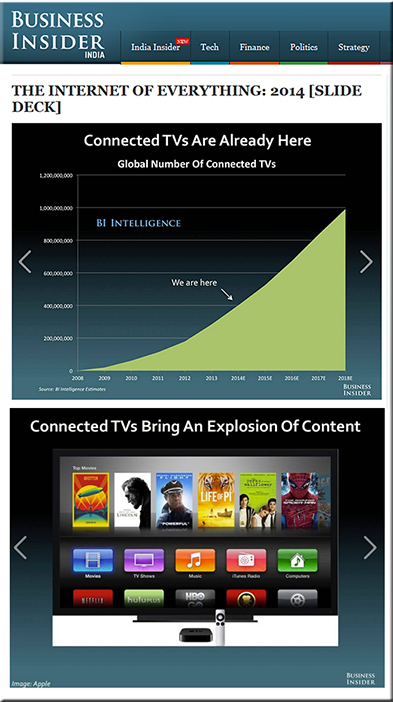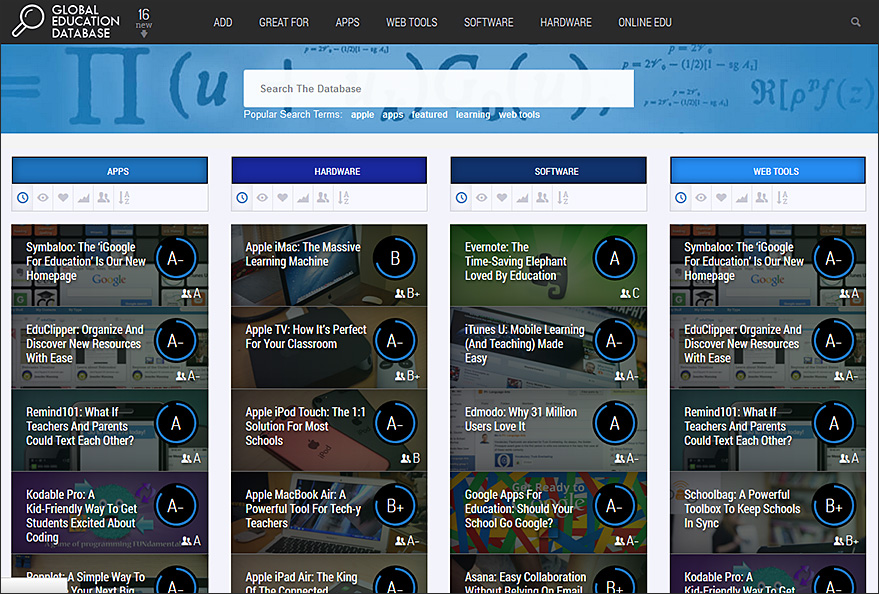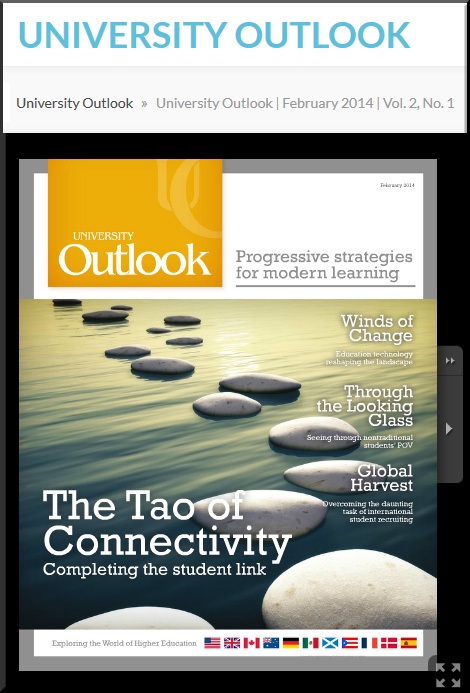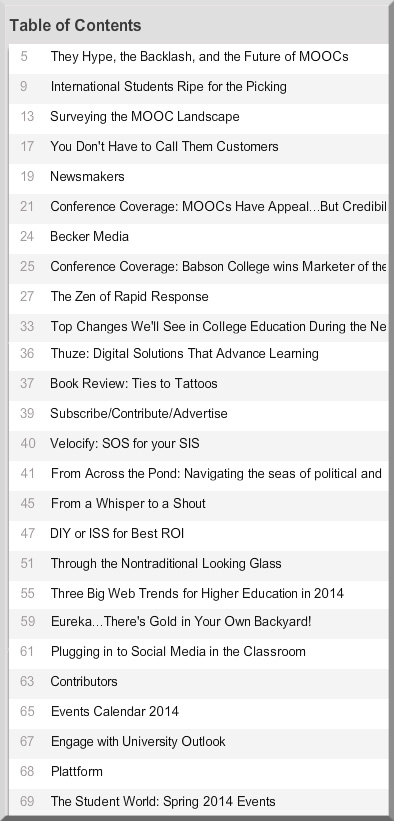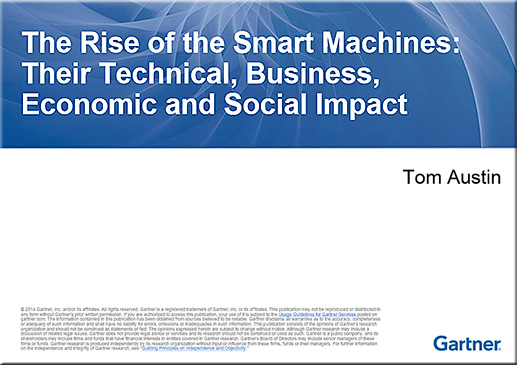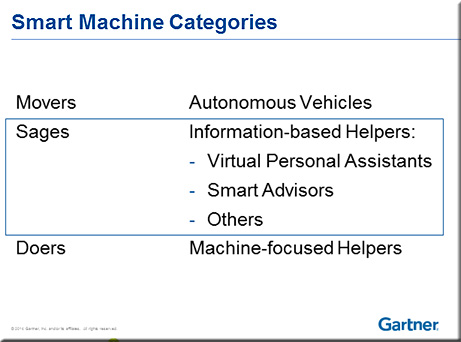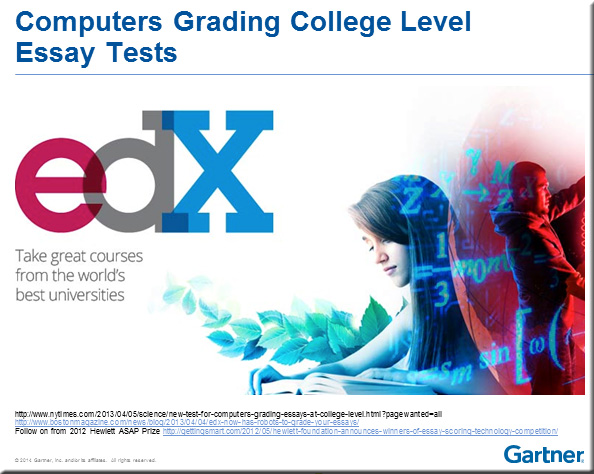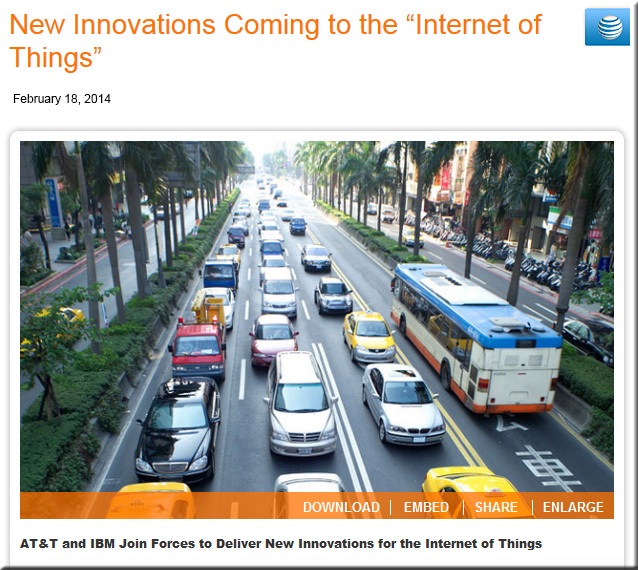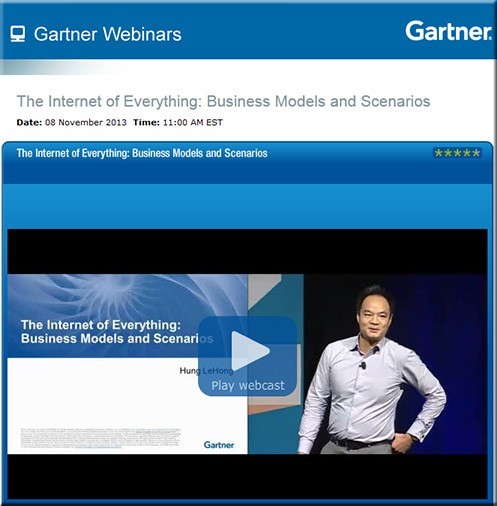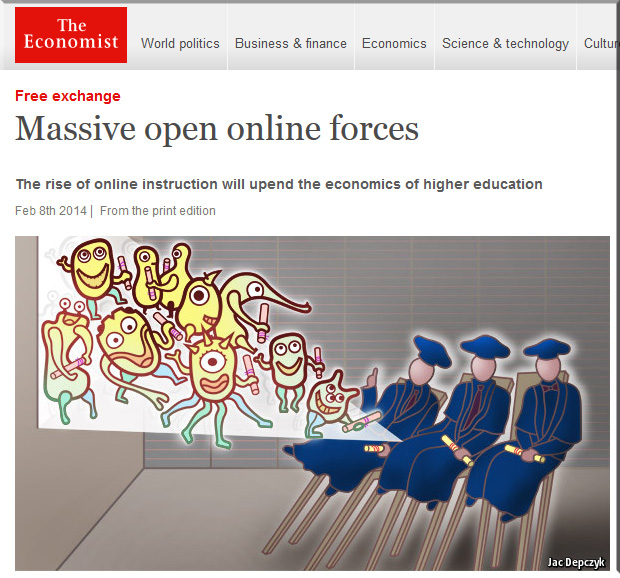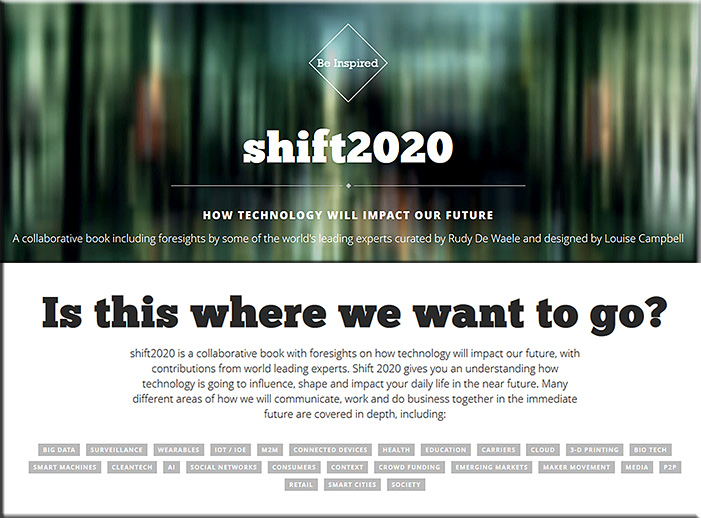Digital life in 2025 — from by Janna Anderson and Lee Rainie
Experts predict the Internet will become ‘like electricity’ — less visible, yet more deeply embedded in people’s lives for good and ill
Excerpts from report:
One striking pattern is that these experts agree to a large extent on the trends that will shape digital technology in the next decade. Among those expected to extend through 2025 are:
- A global, immersive, invisible, ambient networked computing environment built through the continued proliferation of smart sensors, cameras, software, databases, and massive data center s in a world-spanning information fabric known as the Internet of Things.
- “Augmented reality” enhancements to the real-world input that people perceive through the use of portable/wearable/implantable technologies.
- A continuing evolution of artificial intelligence-equipped tools allowing anyone to connect to a globe-spanning information network nearly anywhere, anytime.
- Disruption of business models established in the 20th century (most notably impacting finance, entertainment, publishers of all sorts, and education).
- Tagging, databasing, and intelligent analytical mapping of the physical and social realms
Also see:
- The Rise of the Digital Silhouette — from shift2future.com by Brian Kuhn
Excerpt:
Switching gears for a moment… there are some significant benefits to education systems in the ‘Internet of things’ movement. Imagine that students, wearing various data logging technologies, including Google Glasses, interacting with each other, with ‘text books’, human teachers, each other, and other learning resources, along with a host of educational apps, are continuously digitally documented. Imagine that there are ‘intelligent’ algorithms (think IBM’s Watson but even more advanced) that look for patterns, provide real-time recommendations and coaching that adjust the student’s personalized learning plan, directly interacting with and advising the students like a personal learning coach. Imagine that when a report card is due, the student’s ‘digital learning guide’ automatically produces a summative report card complete with a ‘live’ info graphic on the student’s learning and generates it directly in the student’s online learning portfolio and sends an alert to the parents.











![The Living [Class] Room -- by Daniel Christian -- July 2012 -- a second device used in conjunction with a Smart/Connected TV](http://danielschristian.com/learning-ecosystems/wp-content/uploads/2012/07/The-Living-Class-Room-Daniel-S-Christian-July-2012.jpg)

